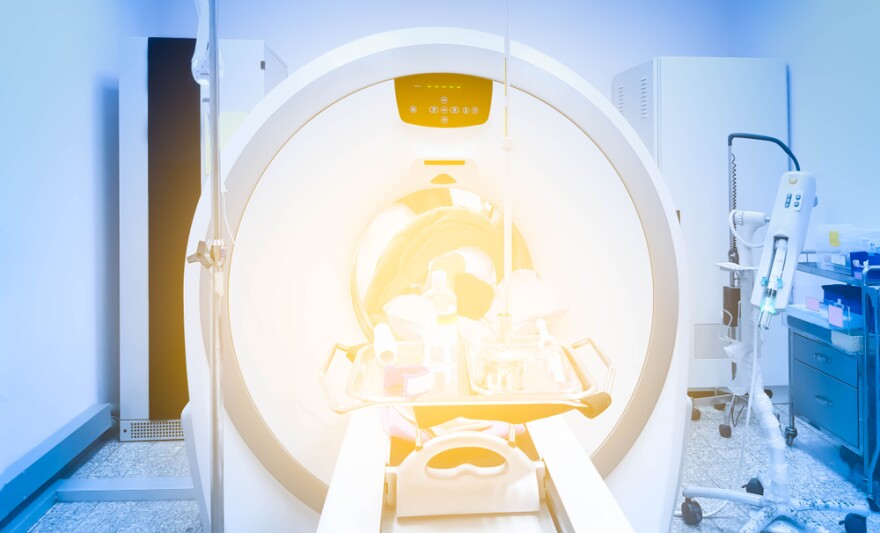Global health experts are taking new steps in the fight against lung cancer. Pulmonologist Dr. David Balis, medical director of Parkland Hospital’s Smoking Cessation Clinic and a professor of Internal Medicine at UT-Southwestern Medical Center, talked about what warranted the change with KERA’s Sam Baker.
INTERVIEW HIGHLIGHTS
Reasons For The Lower Guidelines:
The uptake of this screening has been historically very low. Maybe 10-15% of people who were available to get this screening previously were getting it. People are, maybe, more familiar with having mammograms for breast cancer and colonoscopies for colon cancer and pap smears for cervical cancer. They're not as aware that we now have a screening test (low dose CT scan) for lung cancer.
Why?
Lots of reasons: Access to care. Knowledge that it was available. Maybe the provider is not being aggressive enough. It's been wonderful that there's been so much publicity and interest in fundraising for breast cancer. But again, there just hasn't been the push and the interest in screening for lung cancer.
Low-Dose CT Scans Versus Chest X-Rays
CT scans are much, much better than a chest x-ray. A much better picture, a lot more detail.
Do They Catch Lung Cancer Earlier?
That's the whole point of all this. If we wait until people present with symptoms, unfortunately, the disease is often very advanced — a stage 3or stage 4— and it's spread where it's very difficult to treat the lung cancer.
The whole idea of CT scans is early detection: to catch symptoms at, say, stage one where it's easily treatable. The patient can have a simple surgery, remove the entire cancer and be cured without all the complications of advanced cancer.
Are There Other Causes Of Lung Cancer Besides Smoking?
People who are exposed to other chemicals or pollutants in our air or secondhand smoke or radiation could be involved. But again, the vast majority is related to smoking. That's where we need to put our efforts. That's where we need to screen. And the most important thing we need to do is smoking cessation. So the No. 1 thing we can do to reduce the mortality from lung cancer is to get people to not start smoking in the first place and then to quit.
Who Should Be Screened? (www.cdc.gov)
The U.S. Preventive Services Task Force (USPSTF) recommends yearly lung cancer screening with LDCT for people who:
- Have a 20 pack-year or more smoking history, and
- Smoke now or have quit within the past 15 years, and
- Are between 50 and 80 years old.
A pack-year is smoking an average of one pack of cigarettes per day for one year. For example, a person could have a 20 pack-year history by smoking one pack a day for 20 years or two packs a day for 10 years.
Risks Of Screening
Lung cancer screening has at least three risks:
- A lung cancer screening test can suggest that a person has lung cancer when no cancer is present. This is called a false-positive result. False-positive results can lead to follow-up tests and surgeries that are not needed and may have more risks.
- A lung cancer screening test can find cases of cancer that may never have caused a problem for the patient. This is called overdiagnosis. Overdiagnosis can lead to treatment that is not needed.
- Radiation from repeated low-dose CT scans can cause cancer in otherwise healthy people.
That is why lung cancer screening is recommended only for adults who are at high risk for developing the disease because of their smoking history and age, and who do not have a health problem that substantially limits their life expectancy or their ability or willingness to have lung surgery, if needed.
The best way to reduce your risk of lung cancer is to not smoke and to avoid secondhand smoke. Lung cancer screening is not a substitute for quitting smoking.
When Should Screening Stop?
The Task Force recommends that yearly lung cancer screening stop when the person being screened:
- Turns 81 years old, or
- Has not smoked in 15 or more years, or
- Develops a health problem that makes him or her unwilling or unable to have surgery if lung cancer is found.
RESOURCES:
Interview highlights were lightly edited for clarity.
Got a tip? Email Sam Baker at sbaker@kera.org. You can follow Sam on Twitter @srbkera.
KERA News is made possible through the generosity of our members. If you find this reporting valuable, consider making a tax-deductible gift today. Thank you.


